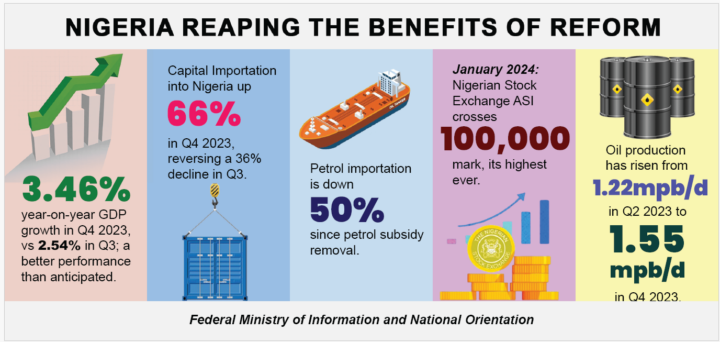Local Wheat farmers in Kiyawa, Jigawa State have claimed that Wheat cultivation thrived during the Harmattan season because haze and dust brought about by atmospheric conditions boost the yield acting as a source of free fertilizer for the crop.
The cereal crop is cultivated between November and March, the coolest period in Nothern Nigeria when the temperature is low, and harvested from 80-120 days after planting.
Wheat is cultivated on about 11,820 hectares of land across 13 states in the Northern part of Nigeria with an estimated production capacity of about 36,943 tonnes per annum which is about 1.5 percent of the quantity required to feed the expanding Nigerian population.
FACT-CHECK: True. People of Sokoto Revere Ex-Gov Bafarawa Years After Leaving Office
In its 2023 Wheat-Dry Season cultivation, the Federal Government targeted about 250,000 farmers who will be supported with requisite farm implements to produce a projected 1.25 million metric tonnes.
In this fact-checking report, we delve into the veracity of the claim that harmattan serves as fertilizer for Wheat cultivation to determine whether there is substantial evidence to support it.
Claim
Local farmers in Kiyawa, Jigawa, Northwest Nigeria, contend that the Harmattan season positively influences Wheat cultivation and increases yields. They argue that the dry and dusty conditions associated with the Harmattan act as a natural fertilizer for wheat crops, resulting in healthier plants and bumper harvests.
Verification
To verify this claim, WikkiTimes consulted agricultural experts, scientific studies, and empirical evidence related to Wheat cultivation in the context of the Harmattan season.
Findings
Dr Yakubu Muhammad Abdullahi, an Agronomist with Indorama Eleme Fertilizer and Chemicals Ltd, emphasised that while the cool atmospheric condition brought about by Harmattan, supports Wheat cultivation by reducing pest pressure, it cannot be considered a direct source of fertilizer for the crop.
He said fertilization typically involves the application of specific nutrients to enhance soil fertility and support plant growth, a process not facilitated by the Harmattan’s atmospheric conditions alone.
Research has shown that while some research suggests that the dry conditions of the Harmattan may reduce the incidence of certain fungal diseases in wheat, there is no scientific evidence to support the claim that it functions as a fertilizer for wheat crops.
On the other hand, anecdotal evidence from local Wheat farmers may indicate perceived improvements in wheat yields during the Harmattan season. However, such observations are subjective and may be influenced by various factors, including soil quality, agronomic practices, and crop varieties, rather than solely attributable to the Harmattan’s fertilizing effects.
Verdict
Based on the evidence gathered through expert opinion, scientific research, and empirical observations, the claim that the Harmattan serves as fertilizer for Wheat lacks substantial support. While the dry and windy conditions of the Harmattan may have some indirect benefits for Wheat cultivation, such as reducing certain disease pressures, it does not function as a direct source of fertilizer.
Agricultural productivity and yield outcomes are determined by various factors, including soil fertility, climate conditions, agronomic practices, and crop management techniques.
Therefore, while the Harmattan may contribute to the overall agricultural environment, it cannot be credited as a fertilizer for Wheat crops in Jigawa, Northwest Nigeria.




